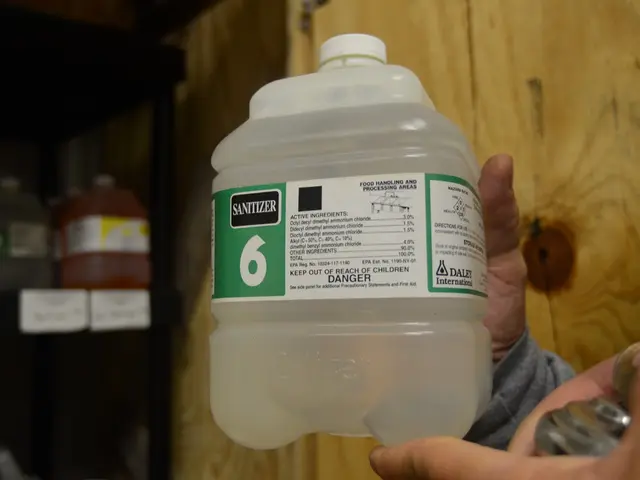Revealing Findings: Every Second Child in Goslar District Suffers from High Lead Levels in Their Blood
In Goslar district, an alarming number of children exceed the safe lead content in their blood. - High Levels of Lead Found in Blood of Every Second Child in Goslar County
Let's dive into the unveiled truth about the Goslar district, a region that's more than meets the eye. A recent study has some shocking findings - 51% of incoming schoolchildren in the district have excessive lead levels in their blood, way above the national average. Here's a lowdown on the alarming situation:
A Toxic Surprise: The Culprit - History and Soil
- Mining Roots: The Harz region, where Goslar is located, has a rich industrial history, with mining operations contributing to the buildup of lead in the soil. This is likely the primary cause of high lead levels in the district's children.
- Soil Contamination: Lead, a persistent pollutant, remains in the soil and can contaminate food sources, especially when grown in affected areas.
Comparing Apples to Apples - The Goslar District versus the Nationwide Scenario
- Local Concerns: In the Goslar district, approximately half of school children have raised blood lead levels, compared to 5% nationwide.
- A Step Forward: Despite these concerning figures, the lead concentration levels in the Goslar district have actually decreased since studies in the 80s.
The Unseen Heroes - Behind the Scenes of the Study
- Volunteers: The study was conducted by researchers from Ludwig-Maximilian-University (LMU) Munich, who tested the blood of 310 children aged between five and seven during the school entrance examination.
- Test Group: Out of roughly 1,200 incoming elementary school students invited to participate, 310 children agreed to volunteer for the study.
Are Children in the Goslar District Putting Their Health at Risk?
- High Exposure: The World Health Organization recommends preventive measures at 50 μg/l of blood lead - a level that is far exceeded in the Goslar district.
- Risks Involved: High lead exposure can lead to increased risks of cancer, damage to the nervous system, and kidney problems. However, for healthy individuals, the direct health consequences have not been proven yet.
Taking Matters into Their Own Hands - The Goslar District's Response
- Soil Replacement: The district plans to replace contaminated soil, especially in children's playgrounds, with uncontaminated soil in their properties.
- More Awareness: The district will also provide new educational materials on lead exposure, recommending regular hand-washing, thorough cleaning of garden-grown produce, and ensuring that children don't come into contact with dirty soil.
A Breath of Fresh Air - The Benefits of Outdoor Play
Despite the seemingly bleak picture, the study's author emphasizes the importance of children not missing out on the benefits of outdoor play - the health advantages far outweigh the risks.
Considering the high lead levels detected in the Goslar district, it becomes crucial for policies to prioritize environmental clean-up efforts and educate the public about preventing lead exposure. Furthermore, targeted research and resources to study the long-term effects on the children's health are vital for ensuring their future well-being.
In light of the concerning high lead levels in children's blood within the Goslar district, it's essential to foster community policies that prioritize environmental clean-up efforts to decrease exposure. Additionally, vocational training programs in science and health-and-wellness could equip residents with the necessary skills to promote public awareness, education, and effective preventive measures in their homes and community.








